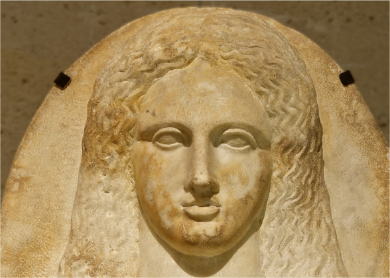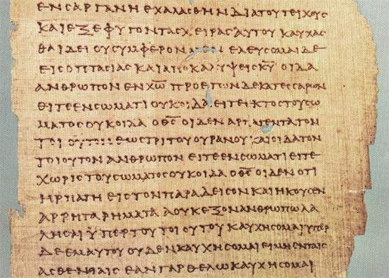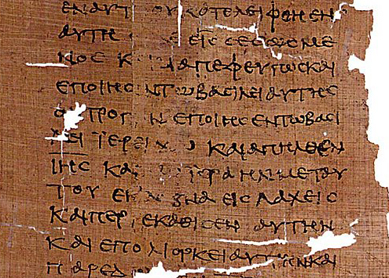Racialized and ethnic discourses are filtered through media, political processes, and virtually every strata of US society, including the church. Until recently readers of the Bible would not have taken seriously the ways in which race and ethnicity are constructed in biblical narratives and furthermore how these images impact not only their interpretations of stories and characters in the Bible but also their own understanding of contemporary racism as played out in everyday life. For most readers, the biblical past is disconnected from the ways the Bible is used in the present.
Part of the reason why there is such a disconnect between ancient readings of biblical texts and contemporary realities of persons reading these texts is due to the fact that biblical scholarship seeks to focus on rendering an objective, unbiased, historical-critical reading of the Bible in its ancient context by using methods and theoretical constructs that keep the reader outside of the interpretive loop. Thus, if one can apply methods privileging historical, literary, textual, and other aspects of interpretation that illuminate the ancient context of a particular passage, then, presumably, the interpretive work is done. However, there are many contemporary factors such as social location, cultural background, ideological and political commitments, economic realities, gender differences, sexual orientation, and other constructs of identity that highlight the distinctive experiences of particular readers and bring these experiences inside the interpretive process.
For interpreters of the Bible a good starting point for understanding race and ethnicity is to clarify the ancient terminology and then to explore the different ways in which biblical writers used this terminology and related conceptual categories to advance their arguments and narratives. Of equal importance is the need for readers to understand the ways in which biblical scholarship itself reflects racialized assumptions implicit in the conceptual and contextual worldviews of scholars dealing with this topic.
Although some scholars may easily use the terms race and ethnicity interchangeably, concluding that there is no easy way to distinguish the differences in modern parlance, it is not necessarily the case that the ancient writers conceived of race (genos) or ethnicity (ethnos) in same way that these terms are used in contemporary discourses. The key interpretive distinction to make in reading for race in early Christian writings is the realization that our modern legacy of racial thinking very much informs and influences what is revealed or ignored in ancient writings. Indeed, attitudes about race and racism in the present affect how one interprets race and ethnicity in the past.
References to ethnicity (Gk. Ethnos, ethnē, ethnikos) are dispersed throughout biblical and extrabiblical writings to indicate nations, groups of people, foreigners, gentiles, and “others.” Ethnicity is generally understood in essentializing terms, which focus on what are considered fixed or observable qualities inherent in a particular ethnic group. In this way, ethnicity is understood as a biological feature of descent or ancestry referring to blood, seed, kinship, or genealogy. Cultural anthropologists and sociologists define ethnicity as a social construct subject to change depending on historical time and circumstances. Still others note that ethnicity is an invented term, the product of modern scholarship. Ethnicity is also closely related to race inasmuch as it is a social construct, and, in this regard, terms such as laos, phylon, genos, genus, natio, and syngeneia are often interchangeably associated with ethnicity.
Among early Christians, ethnicity is generally connected with texts that attempt to demonstrate the universalizing and inclusive impulse of early Christianity, that is, that Christianity is to extend to the ends of the world (
Yet interpretations of ethnicity become more complicated in texts such as Acts 21:38, in which a Roman military officer confuses Paul for “the Egyptian” (hoi Aigyptios), who was known for leading revolts among Jews in Jerusalem (Josephus, Ant. 10.169-172). In this case of mistaken identity (
Race and ethnicity call attention to the power dynamics embedded in biblical narratives and thus can be understood as social and political constructs for designating groups of people, as well as a rhetorical strategy for boundary-making and self-definition. These social and political constructs are not isolated from gender differences; thus, an intersectional interpretive framework that opens new possibilities for analyzing all of the constitutive elements of social relationships based on markers of difference is both recommended and necessary in order to uncover the interlocking systems of oppression implicit in biblical writings that deal with race and ethnicity.
By analyzing biblical narratives through the lens of race and ethnicity, it is now generally accepted among biblical scholars that difference matters, and indeed differences have much to teach us about the power dynamics within early Christian communities and also within communities reading biblical narratives today. The recognition of the multidimensional layers of reality among early Christians challenges contemporary readers to acknowledge the multiple sites of meaning and difference (race, gender, class, sexuality, etc.) that are continually being negotiated in the interpretive process. Readers now have access to conceptual perspectives that explicitly recognize racial and ethnic discourses in the Bible. This framework connects how attitudes about race and racism in the present affect how readers understand race and ethnicity in the past.Bibliography
- Crenshaw, Kimberlé Williams. “Mapping the Margins: Intersectionality, Identity Politics, and Violence against Women of Color.” Pages 357-83 in Critical Race Theory: The Key Writings That Formed the Movement. Edited by Kimberlé Crenshaw, Neil Gotanda, Gary Peller, and Kendall Thomas. New York: New Press, 1995.
- Felder, Cain Hope. Race, Racism, and the Biblical Narratives. Minneapolis: Fortress, 2002.
- McCoskey, Denise Eileen. Race, Antiquity and Its Legacy. London: Bloomsbury Academic, 2012.
- Byron, Gay L. “Race and Ethnicity in the Bible: Pedagogical Challenges and Curricular Opportunities.” Teaching Theology and Religion 15.2 (2012): 105-124.
- Byron, Gay L. Symbolic Blackness and Ethnic Difference in Early Christian Literature. New York: Routledge, 2002.
- Buell, Denise Kimber. Why This New Race: Ethnic Reasoning in Early Christianity. New York: Columbia University Press, 2005.





